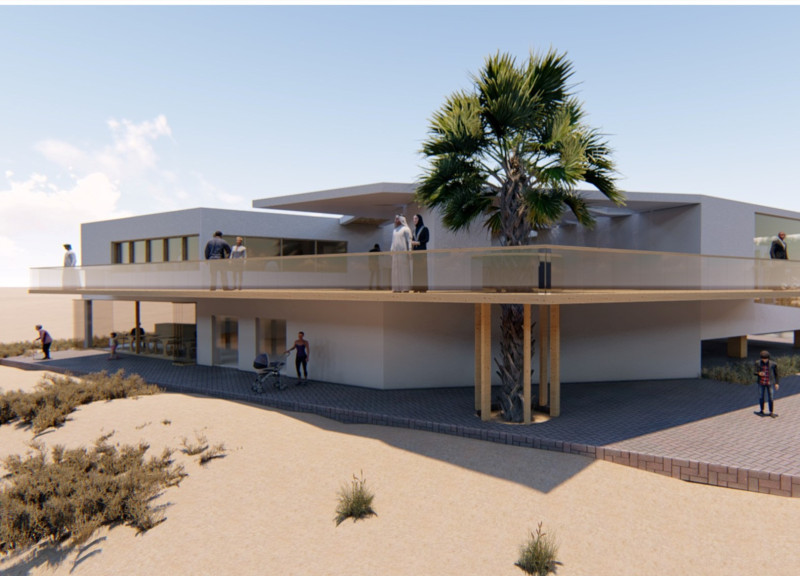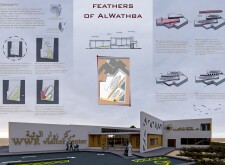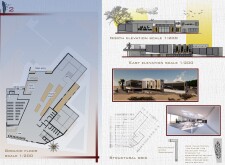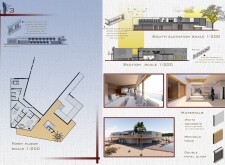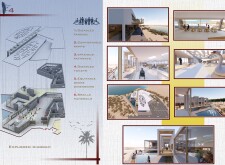5 key facts about this project
Design Functionality and Layout
The visitor center comprises several key functional spaces, including exhibition areas, administrative offices, a café, and educational facilities. Each area is strategically placed to facilitate visitor flow while ensuring accessibility for all users, including those with disabilities.
The building's layout emphasizes open, airy spaces that connect to the external environment. Large areas of glass allow natural light to penetrate deep into the interior, while also framing views of the wetlands. The incorporation of ramps and spacious pathways reflects a commitment to inclusivity, promoting ease of movement throughout the site.
The "Bird’s Eye View" observation point is a notable feature, providing visitors with a unique vantage point to observe wildlife. This design element not only serves a practical purpose but also promotes an appreciation for the natural habitat.
Sustainable Design Strategies
The architectural design employs several sustainable strategies that enhance its environmental performance. The use of white concrete for the building's primary structure aids in thermal regulation, reducing the need for artificial cooling systems. Additionally, recycled wood is utilized to introduce warmth into the design, creating a balance between natural and manufactured materials.
The façade incorporates low-E double panel glass, which improves energy efficiency by minimizing heat gain. The building's natural ventilation strategy is enhanced through strategically placed louver windows, allowing for airflow and a comfortable indoor climate without reliance on mechanical systems.
Symbolic Architecture
The architectural theme of the "Feathers of Alwathba" draws inspiration from the natural forms of bird wings, creating a structure that visually resonates with its environment. The design integrates pathways that mimic the patterns of avian flight, reinforcing the connection between architecture and the local ecosystem. This unique approach distinguishes the project from other visitor centers, positioning it as an interpretative tool that educates visitors about the importance of wetlands and their inhabitants.
Exploring the architectural plans, sections, and designs will provide deeper insights into the project’s thoughtful integration of form and function. Engaging with the comprehensive details will elucidate the innovative architectural ideas that drive this project forward.


